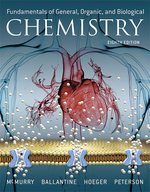?Assume that an aqueous solution of a cation (represented as red spheres in the diagram)
Chapter 5, Problem 5.19(choose chapter or problem)
Assume that an aqueous solution of a cation (represented as red spheres in the diagram) is allowed to mix with a solution of an anion (represented as yellow spheres). Three possible outcomes are represented by boxes (1)–(3):
Which outcome corresponds to each of the following reactions?
(a) \(2 \mathrm{Na}^{+}(a q)+\mathrm{CO}_{3}^{2-}(a q) \longrightarrow\)
(b) \(\mathrm{Ba}^{2+}(a q)+\mathrm{CrO}_{4}^{2-}(a q) \longrightarrow\)
(c) \(2 \mathrm{Ag}^{+}(a q)+\mathrm{SO}_{3}^{2-}(a q) \longrightarrow\)
Text Transcription:
2 Na^+ (aq) + CO_3^2- (aq) arrow right
Ba^+ (aq) + CrO_4^2- (aq) arrow right
2 Ag+ (aq) + SO_3^2- (aq) arrow right
Unfortunately, we don't have that question answered yet. But you can get it answered in just 5 hours by Logging in or Becoming a subscriber.
Becoming a subscriber
Or look for another answer
